Last week we looked at a few of the older graves from the Tolsteeg cemetery. Let’s continue our tour of Tolsteeg through the newer sections, so that we can compare.
There are, of course, more flowers on 3 year old graves than there are on 73 year old graves, and the newer grave markers show less wear and tear then the older. There are fewer flat stones than there were in the 1930s, most graves have a headstone. The headstones themselves are more varied now: more colours, different materials (like glass), different shapes (there are quite a few heart-shaped stones), and the texts on the stones are less archaic and more varied. Many graves have plants, a small bush, or flowers growing on them, some graves are even miniature gardens.
Still, the basics are the same: a headstone with names and dates and often a short citation (though there are some exceptions). The new sections look less sober than the older sections only because of the use of colours and the fresh flowers. There are still no large monuments, no statues, no abris, no mausoleums.
Many cemeteries in The Netherlands are like this: quite sober, at least compared to other graveyards in Europe.
Some cemeteries are more varied, though, as we will see in the Catholic cemetery St. Barbara, which we will visit after Christmas.
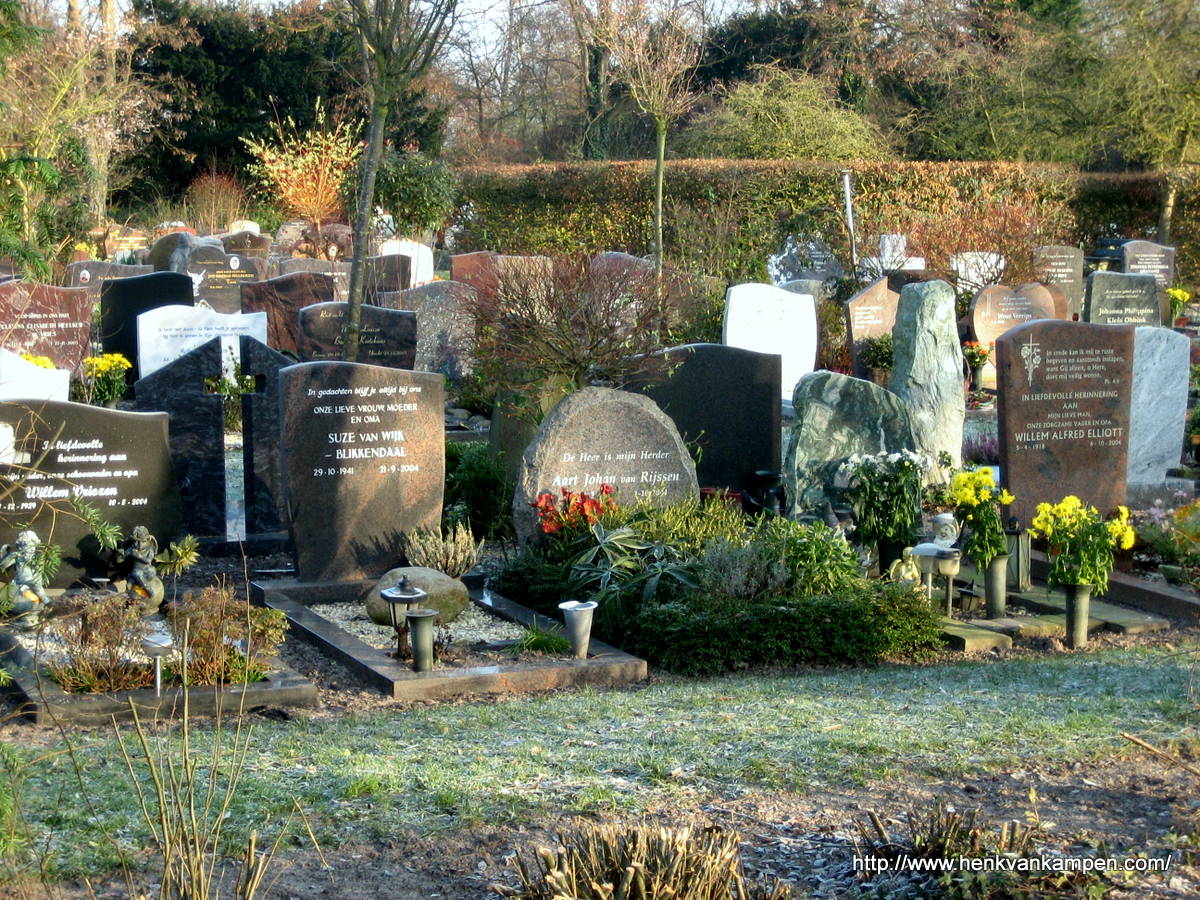

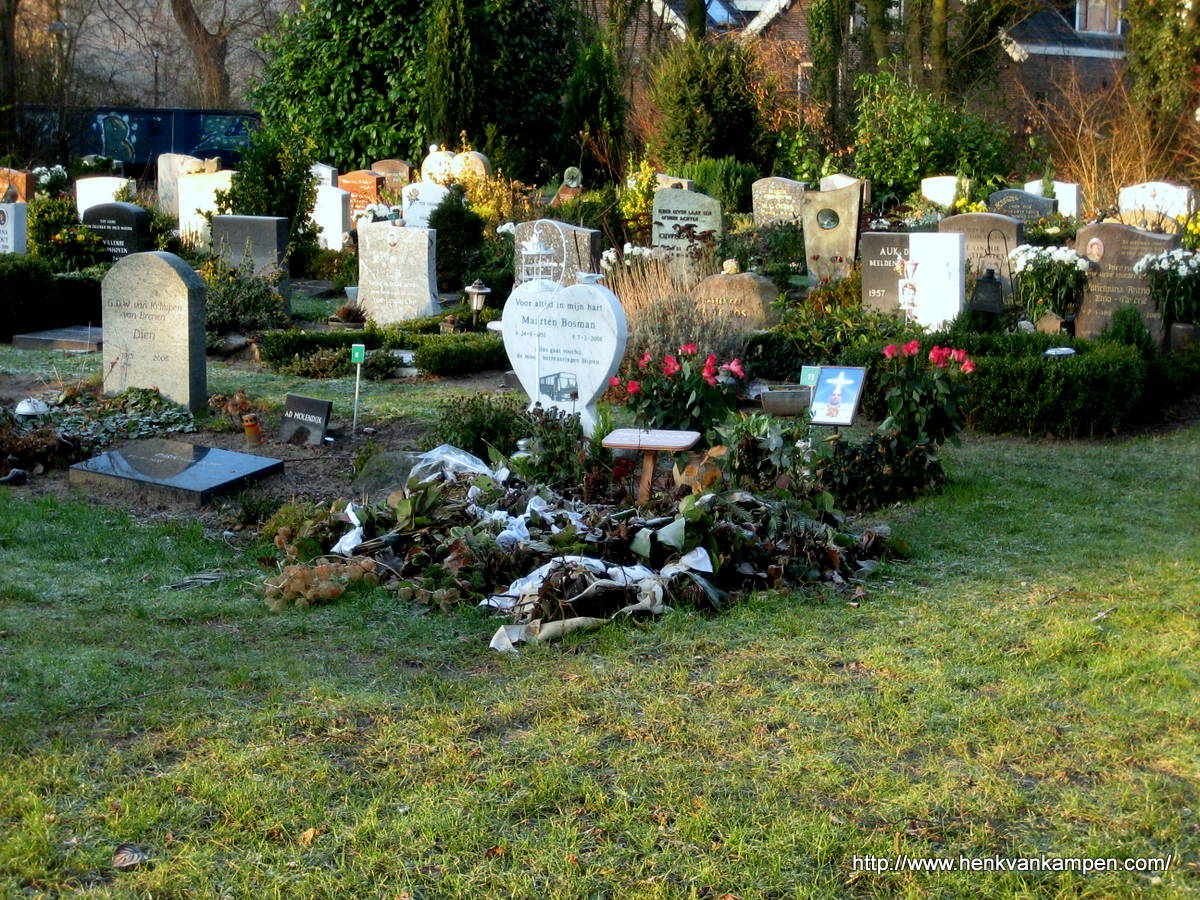
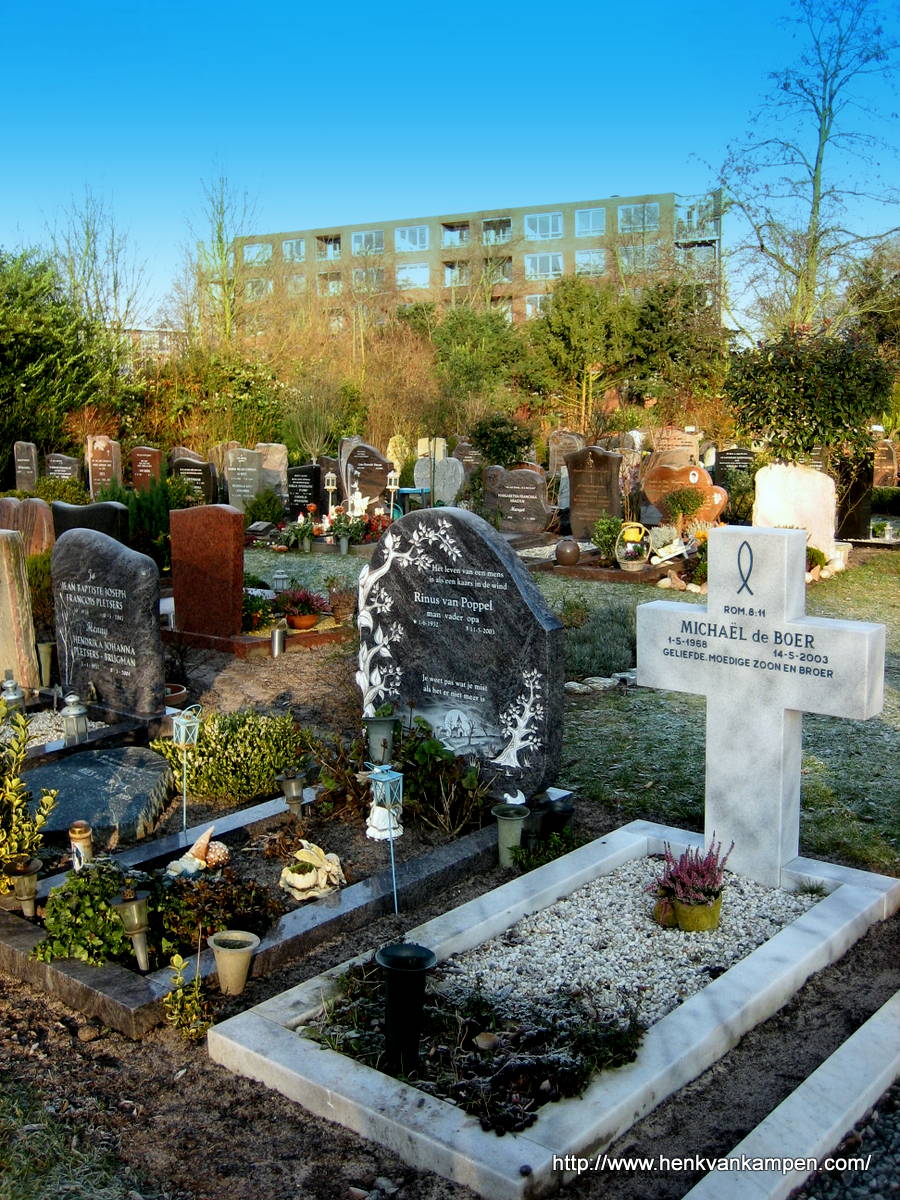
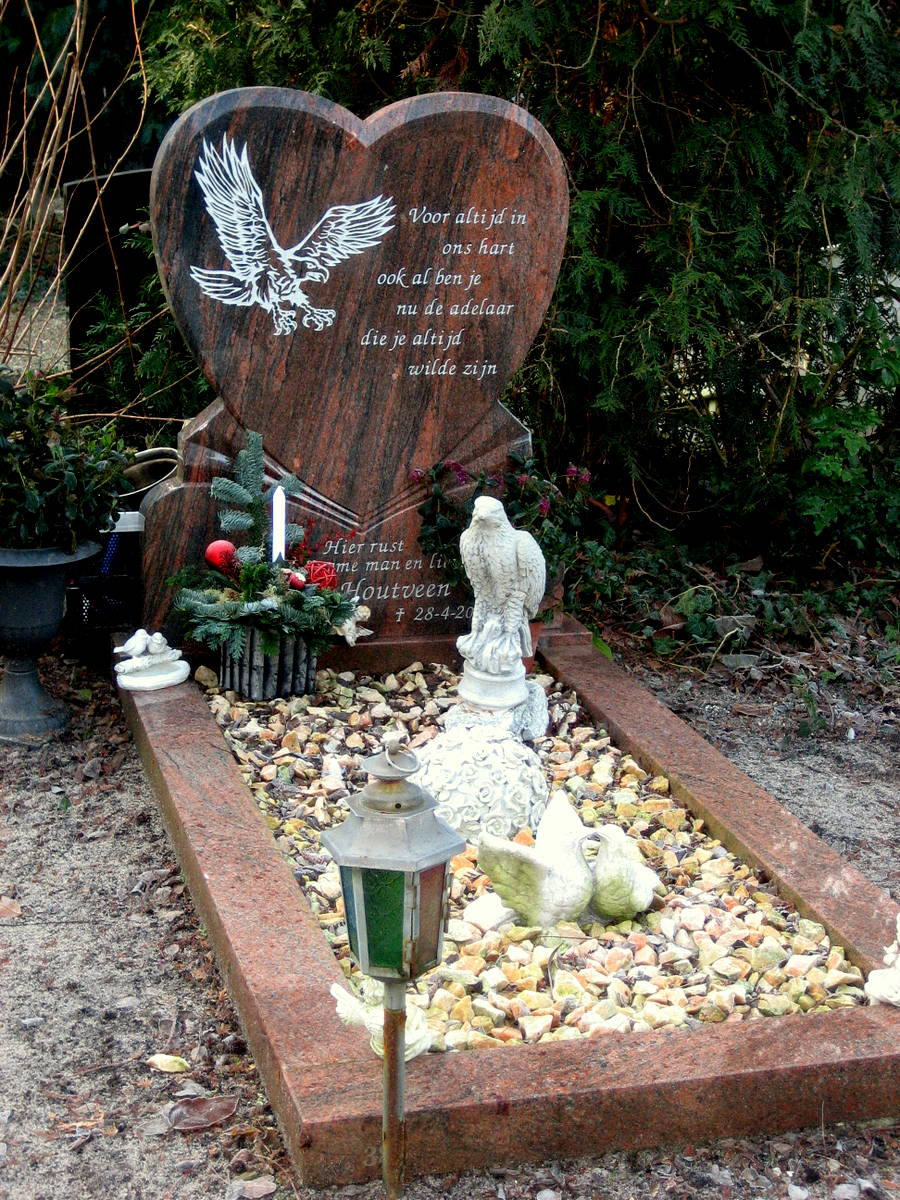
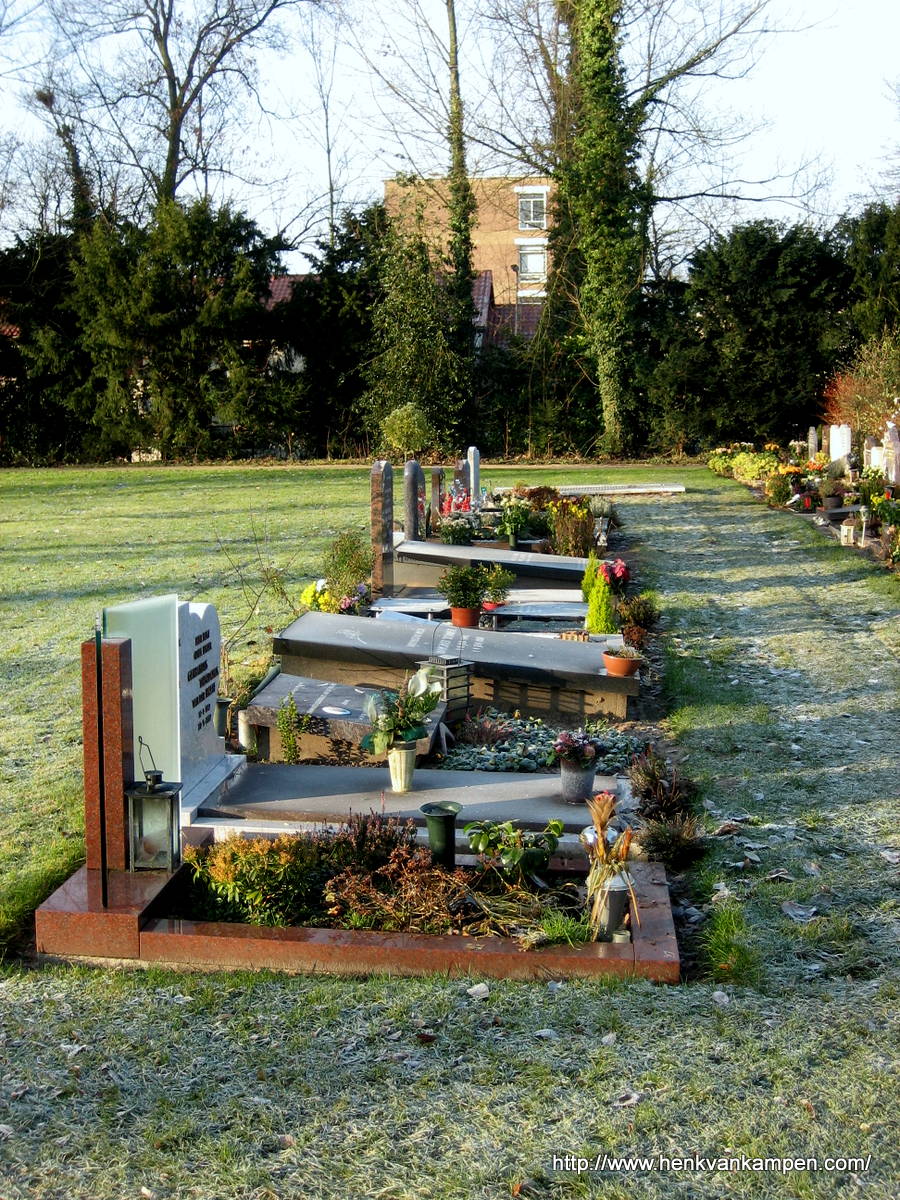
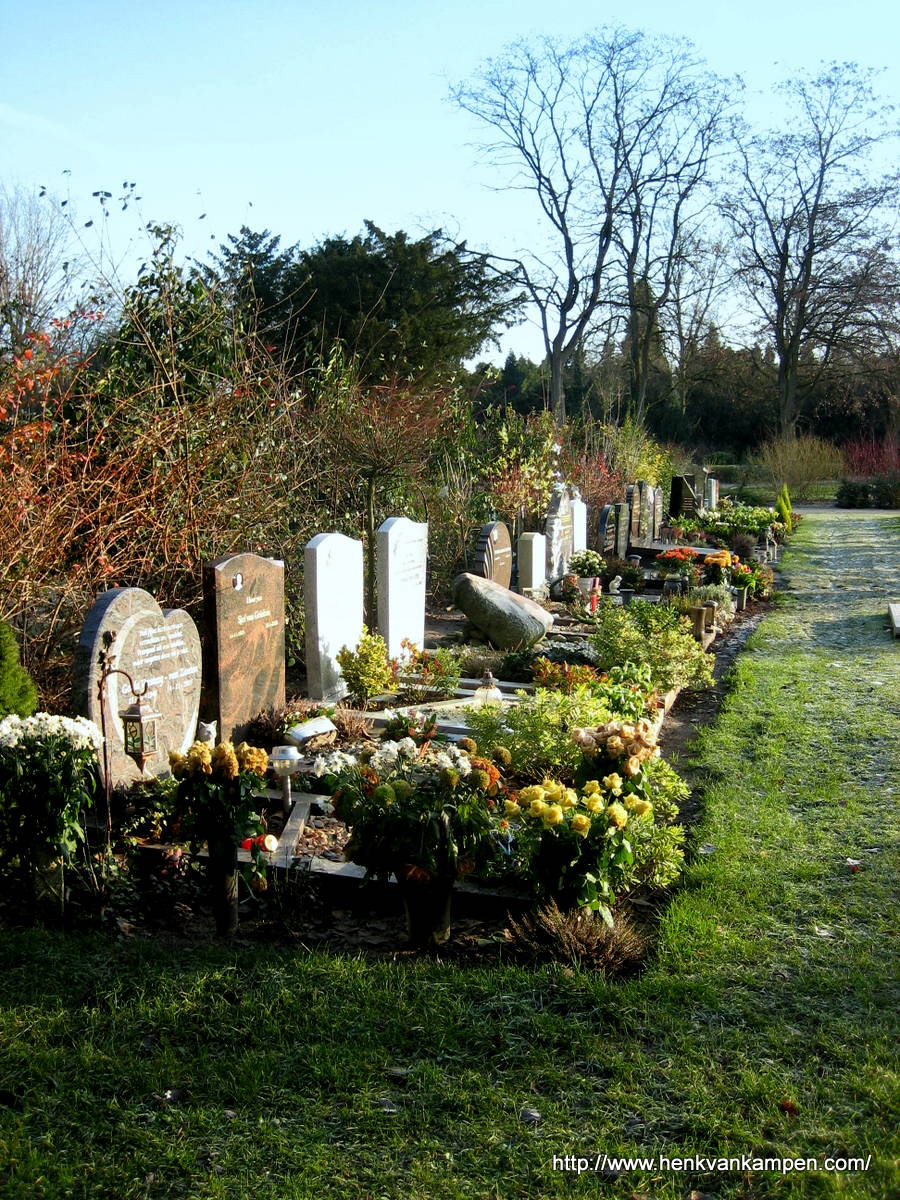
Henk, I’m fascinated by all the variety – headstones, plantings and all. That was one thing that struck me the first time we visited The Netherlands. After a winter in Germany where everything looked the same, it was such a delight to enjoy the variety of buildings and homes and gardens and food.
How interesting! I don’t think I have ever seen a heart shaped stone in all the cemeteries I’ve visited here in Arizona. A very interesting article, thank you.